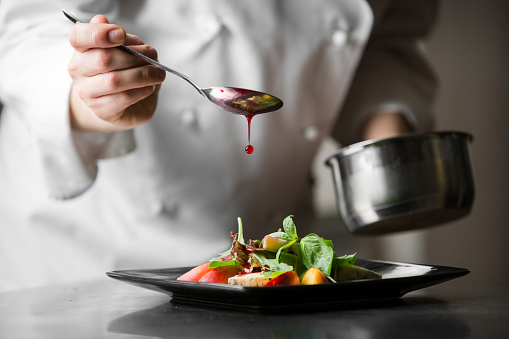Mise en place is French for putting in place, and it refers to getting all of your ingredients ready, prepped, and organized before you begin cooking. If you take the time to do things like measure out spices, dice onions, or mince garlic before you actually start cooking, you’ll rush less, leave less room for error, and improve the quality of your cooking.
Slow and steady wins the race. When your ingredients should be cooked at medium or medium-low, cranking up the heat to high in the interest of cooking faster is not going to produce good results. Your food can turn out charred or burnt on the outside but undercooked on the inside. Give your food the time it needs to properly cook over the appropriate heat. There are some exceptions (like when you’re giving a steak a great sear or boiling water), but 9 times out of 10, avoid cranking up the burner.
If you only taste your food when it’s done, you’ll have no idea what ingredients to add in order to enhance the flavor. Instead, taste as you go, every step of the way. This will help you season appropriately — adding salt, citrus, and spices as necessary. There’s nothing worse than plating your food only to find that it’s way too bland or, on the opposite end of the spectrum, too salty to enjoy.
One of the most common home cooking mistakes is adding food to a cold pan. Turn on the burner and let your pans get hot before you start adding ingredients. Cooking on a hot pan gives steaks, chops, and proteins that gorgeous, brown crust, and it makes vegetables charred and bright rather than mushy. A hot pan also prevents food like chicken and fried eggs from sticking.
The leftover water that remains after you’ve boiled pasta is like liquid gold in the kitchen. It’s starchy and salty and does wonders when added back into your pasta sauce. When you strain your noodles, make sure to save about a cup of the water. Then, add some back little by little to add a silky richness to your pasta sauce.
This goes for pretty much any grains and starches like rice, quinoa, couscous, potatoes, farro, and even pasta. Boiling them in chicken, beef, or even vegetable broth instead of water is a no-brainer way to add lots of deep flavor.
Resist the temptation to continuously flip, stir, and peek at your food while its cooking — a hands-off approach is the best approach. Flip your meat once, let your vegetables brown in the pan, leave the lid on the pot while your rice is simmering, and stop opening the oven constantly to check on broccoli roasting. Intervene as little as necessary for the tastiest results.



